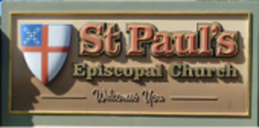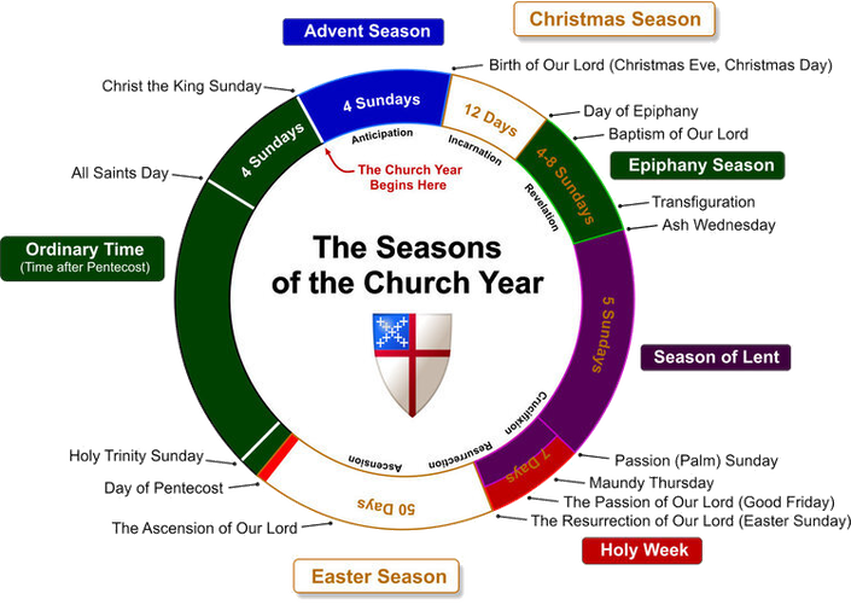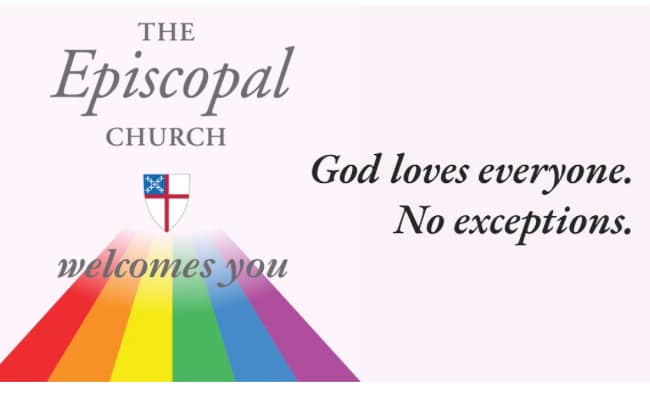The Episcopal Church Seasons and their colors
Many churches observe the “Church Year”. This ancient custom parallels the life of Jesus, beginning with Advent, then His birth; rising to a peak on His glorious Resurrection. We celebrate other events in the short life of Christ and—a month before Christmas—we begin the cycle again. In the Episcopal Church, as in many others, the hangings on the altar, pulpit, and lectern, as well as the stole worn by the clergy, represent the seasons of the church year.
Advent is the beginning of the church year. There are four Sundays in Advent, so it begins about a month before Christmas. This is a “fixed” season; four Sundays before December 25, whatever day of the week that falls on. The Advent color is purple. In church tradition, this is the color of penitence and reflection.
Christmas, a time of great rejoicing. The liturgical color for this day is white. The color remains white through the Feast of the Epiphany on January 6. Epiphany commemorates the showing of Jesus to the Gentiles, specifically the Magi, the Wise Men of the Nativity story, who were the first to know of His divinity. The season proclaims Jesus as Savior of the whole world. The first Sunday after Epiphany Sunday marks the baptism of Jesus and the color is often white. For the rest of the Sundays in Epiphany season, green is the color—the universal color of nature, signifying regeneration, hope, and immortality.
The Epiphany season ends on Ash Wednesday, the beginning of Lent. In some churches ashes from the previous year’s palm leaves on Palm Sunday are imposed upon the foreheads of believers. Ash Wednesday is 46 days before Easter Day. The color for Ash Wednesday and the rest of Lent is purple for penitence.
Palm Sunday, the Sunday before Easter Day, is a time of rejoicing. The color can be red, or purple. The beginning of Holy Week. On Good Friday, the altar is stripped of all its colorful hangings, and a purple veil covers the crosses.
Easter Day—white. What else! The highest day of the Christian year. The date for Easter is the Sunday after the first full moon after the vernal equinox on March 21. It can be no earlier than March 22 or later than April 25.
Fifty days after Easter we celebrate Pentecost, commemorating the gift of the Holy Spirit to the whole world. The color for this day is red, signifying the Holy Spirit. (An old name for Pentecost is Whitsunday, so named because many baptisms were done on this day, with the baptismal clothing being white.)
Following Pentecost is Trinity Sunday, with white hangings, and then the long season of Trinity, with green as its color, lasting for about six months and ending on the first Sunday of Advent.
Liturgical colors are not scriptural! They follow custom, not dictate. In the Middle Ages lots of red, yellow, and blue were used, and then in the somber centuries following, the colors were muted. We’re a color-coded church!
Many churches observe the “Church Year”. This ancient custom parallels the life of Jesus, beginning with Advent, then His birth; rising to a peak on His glorious Resurrection. We celebrate other events in the short life of Christ and—a month before Christmas—we begin the cycle again. In the Episcopal Church, as in many others, the hangings on the altar, pulpit, and lectern, as well as the stole worn by the clergy, represent the seasons of the church year.
Advent is the beginning of the church year. There are four Sundays in Advent, so it begins about a month before Christmas. This is a “fixed” season; four Sundays before December 25, whatever day of the week that falls on. The Advent color is purple. In church tradition, this is the color of penitence and reflection.
Christmas, a time of great rejoicing. The liturgical color for this day is white. The color remains white through the Feast of the Epiphany on January 6. Epiphany commemorates the showing of Jesus to the Gentiles, specifically the Magi, the Wise Men of the Nativity story, who were the first to know of His divinity. The season proclaims Jesus as Savior of the whole world. The first Sunday after Epiphany Sunday marks the baptism of Jesus and the color is often white. For the rest of the Sundays in Epiphany season, green is the color—the universal color of nature, signifying regeneration, hope, and immortality.
The Epiphany season ends on Ash Wednesday, the beginning of Lent. In some churches ashes from the previous year’s palm leaves on Palm Sunday are imposed upon the foreheads of believers. Ash Wednesday is 46 days before Easter Day. The color for Ash Wednesday and the rest of Lent is purple for penitence.
Palm Sunday, the Sunday before Easter Day, is a time of rejoicing. The color can be red, or purple. The beginning of Holy Week. On Good Friday, the altar is stripped of all its colorful hangings, and a purple veil covers the crosses.
Easter Day—white. What else! The highest day of the Christian year. The date for Easter is the Sunday after the first full moon after the vernal equinox on March 21. It can be no earlier than March 22 or later than April 25.
Fifty days after Easter we celebrate Pentecost, commemorating the gift of the Holy Spirit to the whole world. The color for this day is red, signifying the Holy Spirit. (An old name for Pentecost is Whitsunday, so named because many baptisms were done on this day, with the baptismal clothing being white.)
Following Pentecost is Trinity Sunday, with white hangings, and then the long season of Trinity, with green as its color, lasting for about six months and ending on the first Sunday of Advent.
Liturgical colors are not scriptural! They follow custom, not dictate. In the Middle Ages lots of red, yellow, and blue were used, and then in the somber centuries following, the colors were muted. We’re a color-coded church!
Click to set custom HTML
It's all about Love!
Facebook Users: Other items of interest are also available on our Facebook Page.
https://www.facebook.com/StPaulsEpiscopalChurchCambria/
http://www.episcopalchurch.org/parish/st-pauls-episcopal-church-cambria-ca
https://www.facebook.com/StPaulsEpiscopalChurchCambria/
http://www.episcopalchurch.org/parish/st-pauls-episcopal-church-cambria-ca


